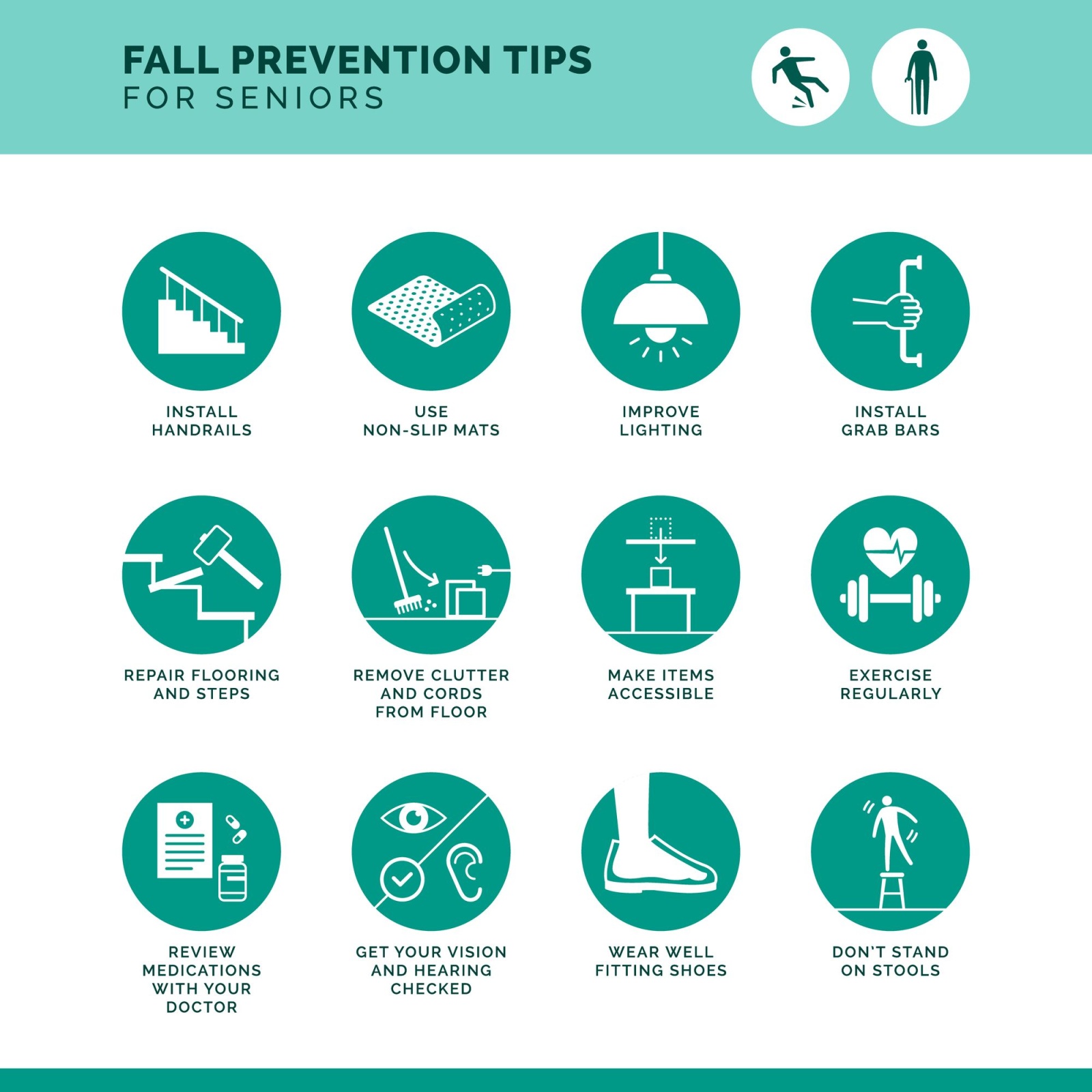Key Takeaways
- Falls often result from a mix of health issues, environmental hazards, and lifestyle factors. Many of these common causes can be prevented or managed.
- Simple home modifications can drastically reduce fall risks, like removing clutter and improving lighting.
- Regular medical check-ups and staying physically active are key proactive strategies for maintaining good health.
- Senior living communities provide expertly designed safe spaces and programs to support residents so they can move with confidence.
Understanding and Preventing Falls in Seniors: A Guide for Families
Fall prevention for older adults involves understanding the combined risks of medical conditions, home environments, and personal behaviors.
By making simple yet effective changes, you can create a much safer living space. These adjustments, paired with regular health check-ups and physical activity, are crucial for maintaining independence.
For families seeking comprehensive support, senior living communities offer environments and specialized programs designed to improve safety, provide peace of mind, and promote overall well-being for their loved ones.
Why Fall Prevention Matters
Protecting the well-being of our aging family members is a top priority. As adults get older, the risk of falling increases, and a single fall can significantly impact their health, confidence, and independence.
Understanding the factors that contribute to falls is the first step toward creating a safer environment and helping your loved one to continue to live a full and active life. With practical support, you can take action steps to prevent common causes of falls and injuries.
Common Causes of Falls in Seniors
Falls in older adults rarely happen for a single reason. More often, they are the result of several contributing factors working together. By identifying these potential risks, you can take a proactive approach to safety.
Medical and Health-Related Factors
Certain health conditions can directly affect an individual’s stability and increase their fall risk. Age-related changes, such as reduced muscle strength or flexibility, play a role. Specific medical issues can also be contributing factors.
Vision and Hearing Loss
Poor eyesight makes it difficult to spot hazards like a loose rug or a step down. Similarly, inner ear problems or hearing loss can affect balance and awareness of one’s surroundings.
Chronic Conditions
Peripheral neuropathy, such as nerve damage in the feet, can lead to numbness, making it hard to feel the ground properly. Conditions such as arthritis, Parkinson’s disease, diabetes, or heart disease can also affect mobility and balance.
Medication Side Effects
Many common medications can cause side effects like dizziness, drowsiness, or a drop in blood pressure upon standing. It’s crucial to be aware of how different prescriptions might interact and affect your loved one’s stability.
Environmental Hazards in the Home
A person’s living space can contain numerous hidden dangers. What seems harmless to one person may be a significant trip hazard for an older adult with mobility or vision challenges. Common household hazards include:
- Poor lighting, such as dimly lit hallways, entryways, staircases, and rooms, can make it easy to miss obstacles or misjudge distances
- Clutter and obstructions, like pathways blocked by furniture, electrical cords, general clutter, and narrow spaces, create a direct tripping risk
- Slippery surfaces, such as polished wood floors, loose area rugs, and slick tile in bathrooms or kitchens, can easily lead to a slip and fall, especially if wet
- Lack of safety features, like stairs without secure handrails or bathrooms without grab bars, forces seniors to rely solely on their own strength and balance in high-risk areas
Behavioral and Lifestyle Factors
Daily habits and routines also contribute to an individual’s risk of falling. A sedentary lifestyle is a primary concern, as a lack of regular exercise leads to weakened muscles and diminished balance.
Rushing, carrying heavy objects, or climbing on unstable furniture to reach something are also risky behaviors that can result in preventable accidents.
Encouraging mindfulness about movement can help reduce these behavioral risks.

Practical Tips for Fall Prevention
Creating a safer environment involves a multi-faceted approach. Combining home modifications with proactive health management can make a world of difference in preventing falls.
Home Modifications
Start by assessing your loved one’s home for potential hazards. Many changes are simple and inexpensive.
- Clear pathways
- Remove clutter from floors, especially in high-traffic areas
- Secure or remove loose rugs and tape down electrical cords along the walls
- Improve lighting
- Add brighter bulbs to lamps and fixtures
- Place nightlights in bedrooms, hallways, and bathrooms
- Install safety supports
- Add grab bars in the shower, tub, and near the toilet
- All stairways should have sturdy handrails on both sides
- Organize for accessibility
- Keep frequently used items in easy-to-reach cabinets or on shelves
- Wherever possible, prevent the need for step stools or climbing
Mobility Aids and Regular Health Check-Ups
The right tools and professional oversight are vital. Mobility aids like canes or walkers can provide crucial support, but they should be properly fitted by a professional.
Regular appointments with a healthcare provider are essential for monitoring vision, hearing, and overall health. These visits are also an ideal opportunity to review medications and discuss any side effects, such as dizziness or fatigue.
Encourage Physical Activity
Staying active is one way to help prevent falls. Exercise helps build strength, improve balance, and increase flexibility. Gentle activities are highly beneficial. Some popular go-to exercises that are adaptable for older adults include:
- Walking, whether Nordic walking or a casual stroll, for 10 minutes or 30 minutes, this simple daily movement can improve lower-body strength
- Tai Chi or yoga are practices that focus on slow, controlled movements that enhance balance and stability
- Chair exercises and seated stretches can help people with limited mobility maintain muscle tone with easily adaptable support
How Senior Living Communities Enhance Safety
For many families, ensuring a loved one’s safety around the clock can be challenging.
A senior living community provides a transformative solution, offering an environment specifically designed to minimize fall risks. From accessible layouts and built-in safety features to staff availability, these communities are built to support independence securely.
At Holbrook, we go a step further with specialized wellness initiatives like our Steady Steps program. We’ve created our comprehensive 15-week program to improve balance, increase strength, and build confidence proactively.
Through targeted exercises and professional guidance, residents develop the physical skills needed to navigate their daily lives more safely, reducing their risk of falls and empowering them to remain active and engaged.
If you are exploring ways to enhance your loved one’s safety and well-being, a supportive community could be the answer. We invite you to learn more about our approach to wellness and resident care.
Contact Holbrook Sugar Hill today to schedule a tour and see how our community is designed to provide security, comfort, and peace of mind for both residents and their families.
